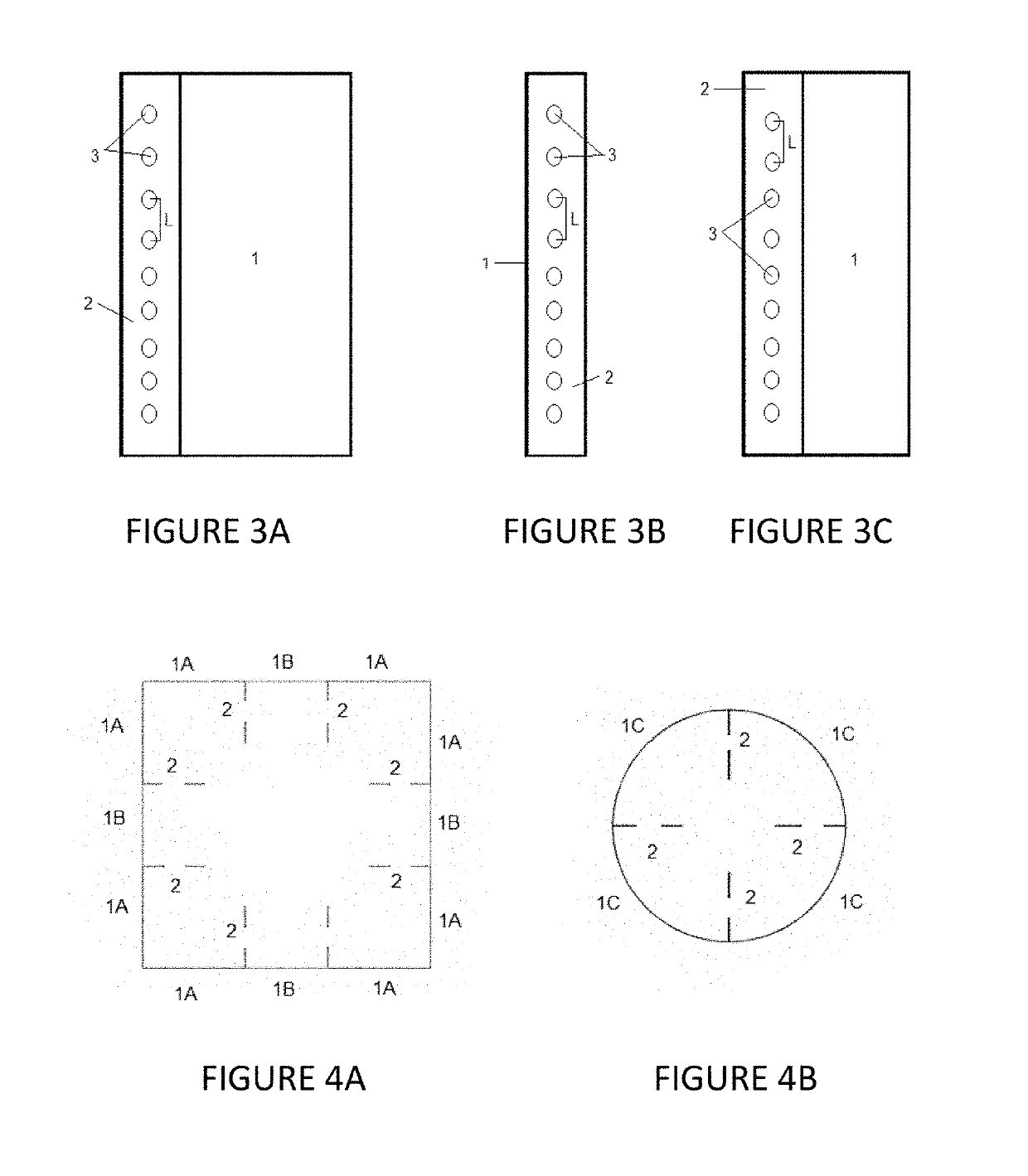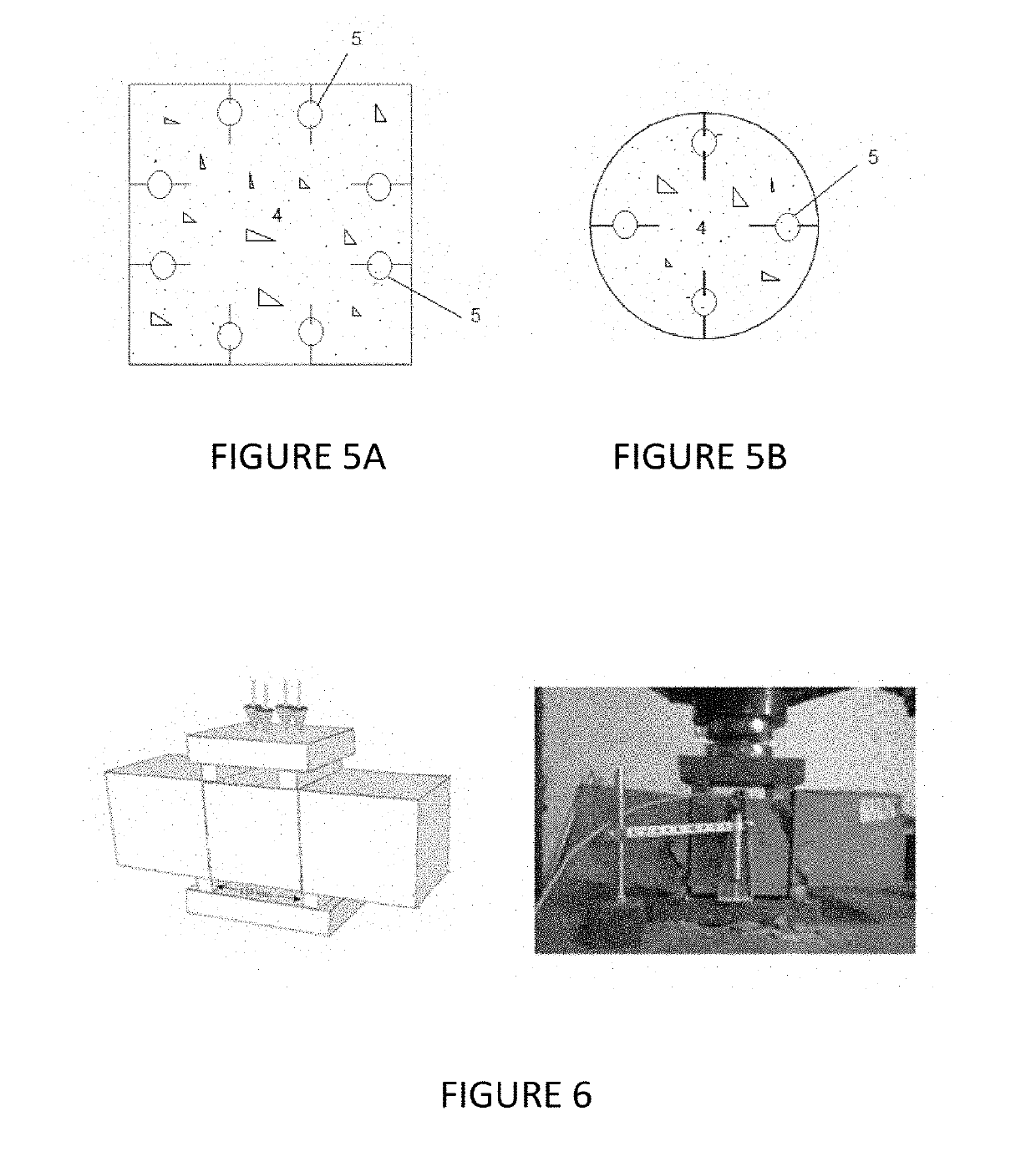C-sections and composite decks formed by cold-formed sheets for a system of composite reinforced concrete columns
a technology of composite reinforced concrete and cold-formed sheets, which is applied in the direction of columns, pillars, struts, etc., can solve the problems of high labor consumption at the site with a higher risk of errors, long execution time, and high direct and administrative costs, and achieve the effect of increasing material quantity and tim
- Summary
- Abstract
- Description
- Claims
- Application Information
AI Technical Summary
Benefits of technology
Problems solved by technology
Method used
Image
Examples
example 1
Construction Details
[0082]COMPOSITE COLUMN-FOUNDATION PEDESTAL JOINT: Applies to both reinforced concrete and steel structures. As shown in FIG. 7, the structural connection is given by the extension of the first reinforcing section of the column (6) rising from the pedestal (7), for a length not less than the development length (61) of the bar of greater diameter inside the concrete core (4) of the composite section (6). Said column (6) is attached to the pedestal (7) by means of leveling nuts (71), adjusting nuts (72) and anchor bolts (73). The base plate frame (8) fulfills only the function of facilitating the positioning of the composite decking.
[0083]JOINT BETWEEN COMPOSITE COLUMN AND BEAMS OR SLABS: Applies to reinforced concrete structures, specifically plates or slabs (9). As shown in FIG. 8, the structural connection is given by the extension of the last and first reinforcing section (62) of the column (6) immediately following, for a length not less than the development le...
example 2
Analytical Basis of Development and Advantages
[0085]DESIGN CRITERIA: Standards: ACI-318-11 and NSR-10, Chapter: “Columns of Composite Section,” and AISI standard with respect to COMPOSITE CHANNEL SECTIONS.
[0086]STEEL OF THE COMPOSITE CHANNEL SECTIONS: As defined above: Cold Roll sheet of ASTM A572 galvanized steel with thicknesses: 0.45 mm-2 mm or Stainless 302, with thicknesses between: 0.5 mm-1.5 mm. For the analysis, the AISI standard for cold formed steels applies. This regulation, in sections A3.2 and A3.3 relating to DUCTILITY, establishes the applicable criteria for other steels than carbon steels, one of which is Stainless Steel 302 CR.
[0087]COMPATIBILITY OF DEFORMATIONS: For the ASTM A572 and Stainless Steel CR 302 and the concrete with the mixture design specifications defined above, the equivalence of the maximum unit deformations within the elastic range is maintained: 0.2%. This is a fundamental hypothesis in the behavior of the composite system.
[0088]MINIMUM THICKNESS ...
PUM
 Login to View More
Login to View More Abstract
Description
Claims
Application Information
 Login to View More
Login to View More - R&D
- Intellectual Property
- Life Sciences
- Materials
- Tech Scout
- Unparalleled Data Quality
- Higher Quality Content
- 60% Fewer Hallucinations
Browse by: Latest US Patents, China's latest patents, Technical Efficacy Thesaurus, Application Domain, Technology Topic, Popular Technical Reports.
© 2025 PatSnap. All rights reserved.Legal|Privacy policy|Modern Slavery Act Transparency Statement|Sitemap|About US| Contact US: help@patsnap.com



